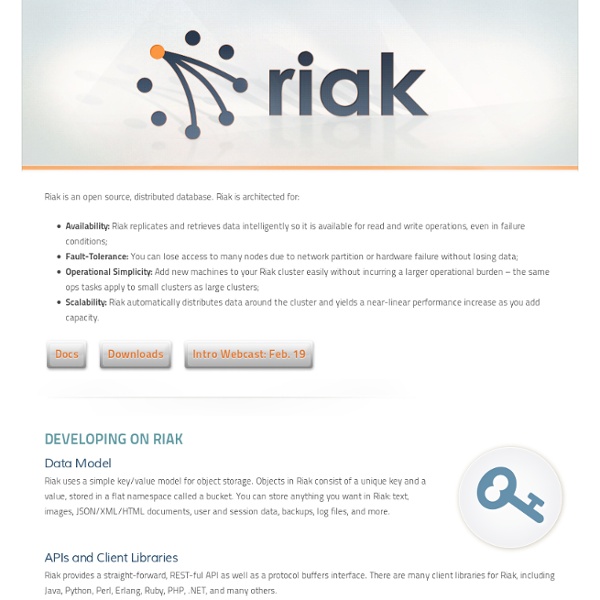



Apache Pig Welcome to LWN.net [LWN.net] Hive! LXR / The Linux Cross Reference What's new 2010-05-07 A badly timed hardware malfunction brought lxr.linux.no offline for several days. Thanks to the folks at Redpill Linpro for bringing the server back online -- apologies to everyone else for the interruption of service. 2010-02-06 A couple of rather embarrasing cross-site scripting holes have been plugged. Thanks to Dan Rosenberg and Moritz Naumann for bringing them to my attention. 2009-08-16 Reindexing is now complete for all repositories. 2009-08-12 lxr.linux.no has had its operating system upgraded to Ubuntu 9.04, and the LXRng software itself has been updated to the most recent version. 2008-06-02 Problems concerning a change of ip address unfortunately left lxr.linux.no unavailable for (at least) the past day or so. 2008-02-28 Thanks to Ahmed S.
HBase Interoperability Bridges and Labs Center Sqoop Enterprise - Sign In Language : English Username : Password : Forgot Password? Flume Home » OpenStack Open Source Cloud Computing Software ZooKeeper The Writings of Leslie Lamport This document contains descriptions of almost all my technical papers and electronic versions of many of them for downloading. Omitted are papers for which I no longer have copies and papers that are incomplete. I have also omitted early versions of some of these papers--even in cases where the title changed. Included are some initial drafts of papers that I abandoned before fixing errors or other problems in them. A table of contents precedes the descriptions. Each description attempts to explain the genesis of the work. Where I think it's interesting, I give the story behind the publication or non-publication of a paper. I would like to have ordered my papers by the date they were written. Whenever possible, I have included electronic versions of the works. Mathematics Bulletin of the Bronx High School of Science (1957), pages 6,7, and 9. This appears to be my first publication, written when I was a high school student. In the summer of 1966, I worked at the M.I.T. Ph.D. , T. , T.